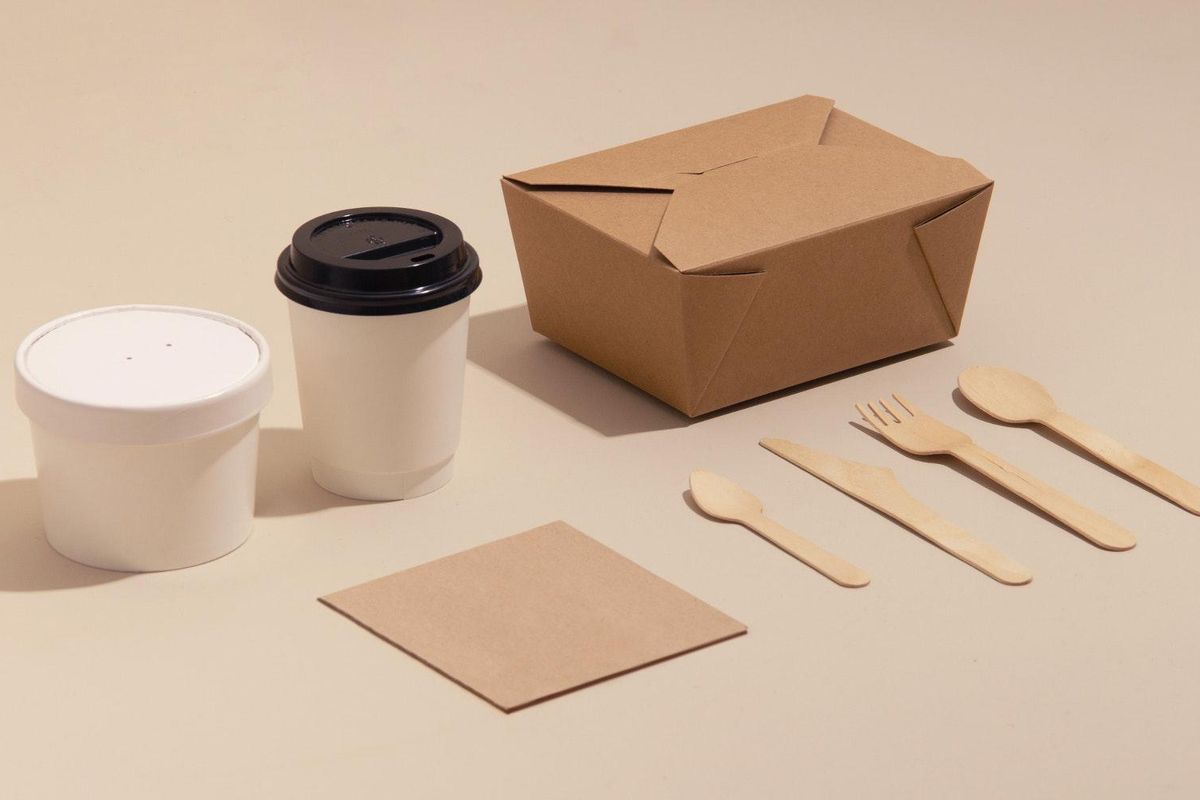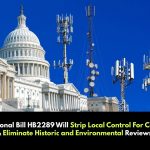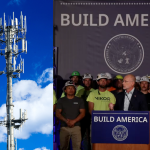
Here’s a secret about single-use foodware: brands and manufacturers don’t have to tell what’s in it, and in some cases, they don’t even know.
This presents a challenge for safety-conscious consumers of takeout containers, disposable cups, and similar materials who are hoping to avoid chemicals like per- and polyfluoroalkyl substances (PFAS), bisphenols, phthalates, and other less high-profile compounds.
But the nonprofit organizations Clean Production Action, based in Massachusetts, and Center for Environmental Health, based in California, both advocates of chemical safety in consumer products, believe they have a solution: the first-ever independent, third-party chemical screening and certification program for disposable foodware. Private consumers and institutional buyers can use the program to inform purchasing decisions.
Launched last November, the GreenScreen Certified Standard for Food Service Ware is a subset of the larger GreenScreen brand, operated by Clean Production Action since 2007. The brand also includes certifications for firefighting foams, textiles, furniture, fabrics, cleaners, and degreasers.
Manufacturers of single-use foodware seeking certification can apply at one of three levels, with increasingly fewer chemicals allowed and individual chemicals assessed with stricter criteria at each level. Even at the lowest level, Silver, full disclosure to GreenScreen of all intentionally added ingredients is required, and more than 2,000 chemicals of concern are prohibited. These include endocrine-disrupting chemicals such as bisphenols, phthalates, parabens, and organotin compounds; chemical classes including PFAS, organohalogens, and polycyclic aromatic amines; compounds of cadmium, hexavalent chromium, lead, and mercury; and antimicrobials and nanomaterials.
Certified foodware must also undergo product-level testing at an approved lab for a variety of chemicals and classes including fluorine, an indicator of PFAS. There is mounting evidence that many products are unintentionally contaminated with PFAS during manufacturing, even if the chemicals are not meant to go into the product.
These standards are more stringent than those enforced by any government agency or regulatory body in the world—but they still keep consumers in the dark as to which chemicals are actually being used.
Industry secrecy
GreenScreen’s track record and name recognition likely helped it succeed in launching a third-party foodware certification program where other attempts have stalled. An ongoing effort to ban PFAS in food packaging in Washington, for example, was delayed in 2020 when the state was unable to obtain details from brands and manufacturers about what they were using instead of PFAS, Clean Production Action Executive Director Mark Rossi told EHN. These chemicals impart grease and water resistance to porous materials like paper and molded fiber in foodware; if eliminated, other chemicals must be used in their place, or the entire product must be redesigned.
This raises the possibility of manufacturers employing so-called regrettable substitutes—alternative chemicals that turn out to be similarly harmful, most famously illustrated by the replacement of bisphenol A (BPA) with BPS, BPF, and other endocrine-disrupting bisphenols in many products.
Knowing that a given product is PFAS-free may not be enough, but moving from there to a surer assurance of safety can be stymied by secrecy from raw material suppliers, Rossi said. “The company that puts their brand name on that product often doesn’t know what is being used as the alternative to PFAS,” he said. “They don’t know the alternative chemistries because, oftentimes, the [supplier] will claim it’s proprietary.”
The workaround offered by GreenScreen is a non-disclosure agreement with suppliers in exchange for complete accounting of intentionally added chemicals down to the parts per million level. If a raw-material supplier is unwilling to be fully transparent with GreenScreen about the original formulation, then the final product cannot be certified.
This impulse for privacy within the industry is so strong, in fact, that rollout of the new certification program was delayed for nearly a year by difficulties in gaining access to proprietary information, Rossi said. Clean Production Action and the Center for Environmental Health held off on formally launching the program until they were able to successfully usher a couple initial products all the way through the certification process.
Certified products
The program is still in its early stages, but to date two materials have been certified. One is a line of molded-fiber plates, bowls, and clamshell packages certified Silver, from a company called Eco-Products that sells both business-to-business and direct to consumers. Eco-Products plans to add the GreenScreen logo to its packaging to advertise the certification, Director of Marketing Nicole Tariku told EHN.
The other is a raw material: plastic beads from a company called NatureWorks made of plant-derived polylactic acid (PLA) that are used in the production of single-use plastics. These are certified Platinum, the program’s highest level, but any final product using the beads, such as a clear-plastic cup or a PLA-lined paper plate, will need to be screened and certified separately.
Related: What are PFAS?
Jane Muncke, managing director of the Zurich, Switzerland-based Food Packaging Forum, a nonprofit organization that performs and communicates science about food packaging and health, provided input for the new program during its development. “It’s good to raise awareness for hazardous chemicals in food-contact materials, and the certification helps with this,” she said.
Muncke commends GreenScreen for excluding recycled paper, which is often loaded with harmful chemicals despite its appearance as a sustainable choice.
But she is concerned by the program’s allowance of up to 100 parts per million for some unintentionally added chemicals, even at the Platinum level. “That is way too high in my opinion,” she said.
Confidentiality about chemical replacements
After declining to bare all for Washington state’s program, Minneapolis-based NatureWorks worked with GreenScreen once the offer of a non-disclosure agreement was on the table, said lead applications engineer Nicole Whiteman. “The information needed in order to go through that toxicology evaluation required revealing a lot of confidential business information,” she told EHN. “A lot of the very minute ingredients, such as the catalyst for bringing together the polymerization, are closely held trade secrets, or confidential information to a company. And the beauty [with GreenScreen] is that we can have a fairly standard confidentiality agreement with the toxicology firm.”
NatureWorks can now market its plastic beads to consumer-facing manufacturers of disposable food-service products as certified safe according to the strictest standards available anywhere.
And even at the Silver level, the Eco-Products certification could serve the company well as it competes in the expanding global market for PFAS-free molded-fiber foodware, and as consumer and regulatory awareness of the issue continues to grow.
Tariku says GreenScreen’s assurances of privacy were key to the company’s ability to participate. When pressed by EHNto comment on the nature of its new formulation, even in general terms, she replied, “We can’t discuss details of the alternative material. That’s one reason why Eco-Products sought third-party certification through GreenScreen: to protect our innovative process while also being as transparent as feasible about the material.”
Follow our PFAS testing project with Mamavation at the series landing page.
Want to know more about PFAS? Check out our comprehensive guide.
Have something you want tested for PFAS? Let us know and write us at feedback@ehn.org.
Banner photo credit: Clair/Unsplash





